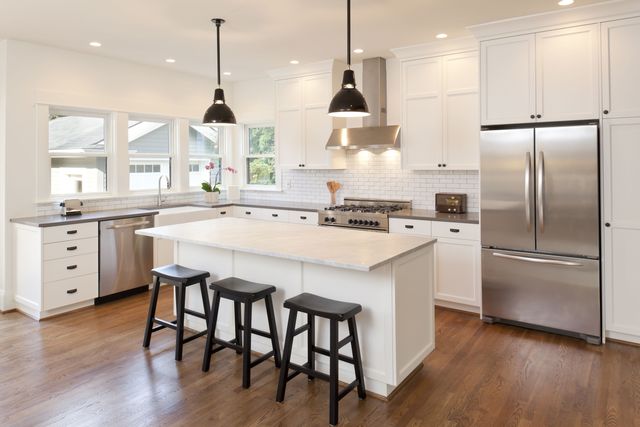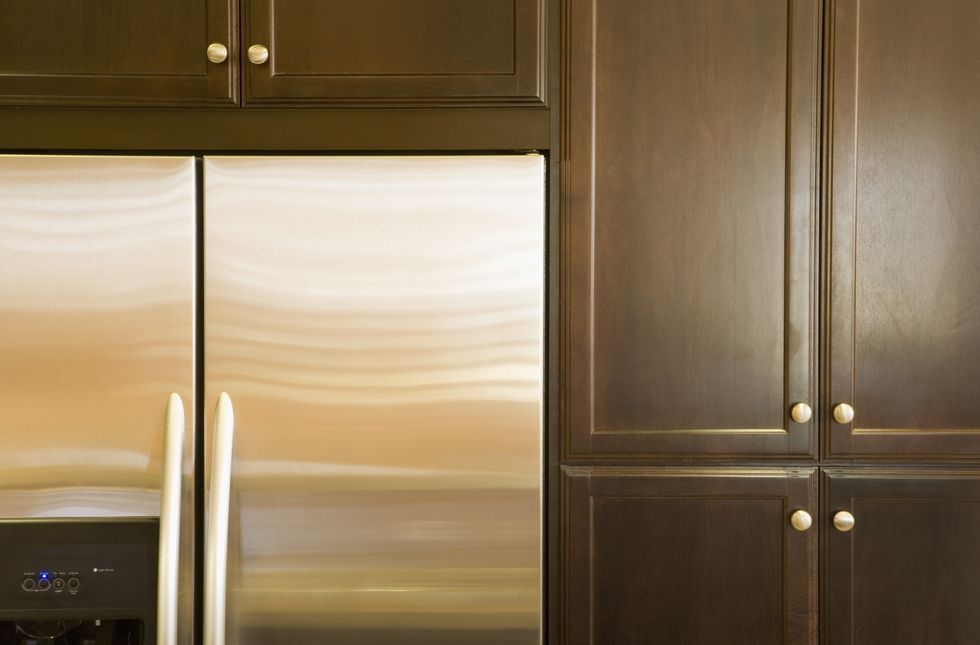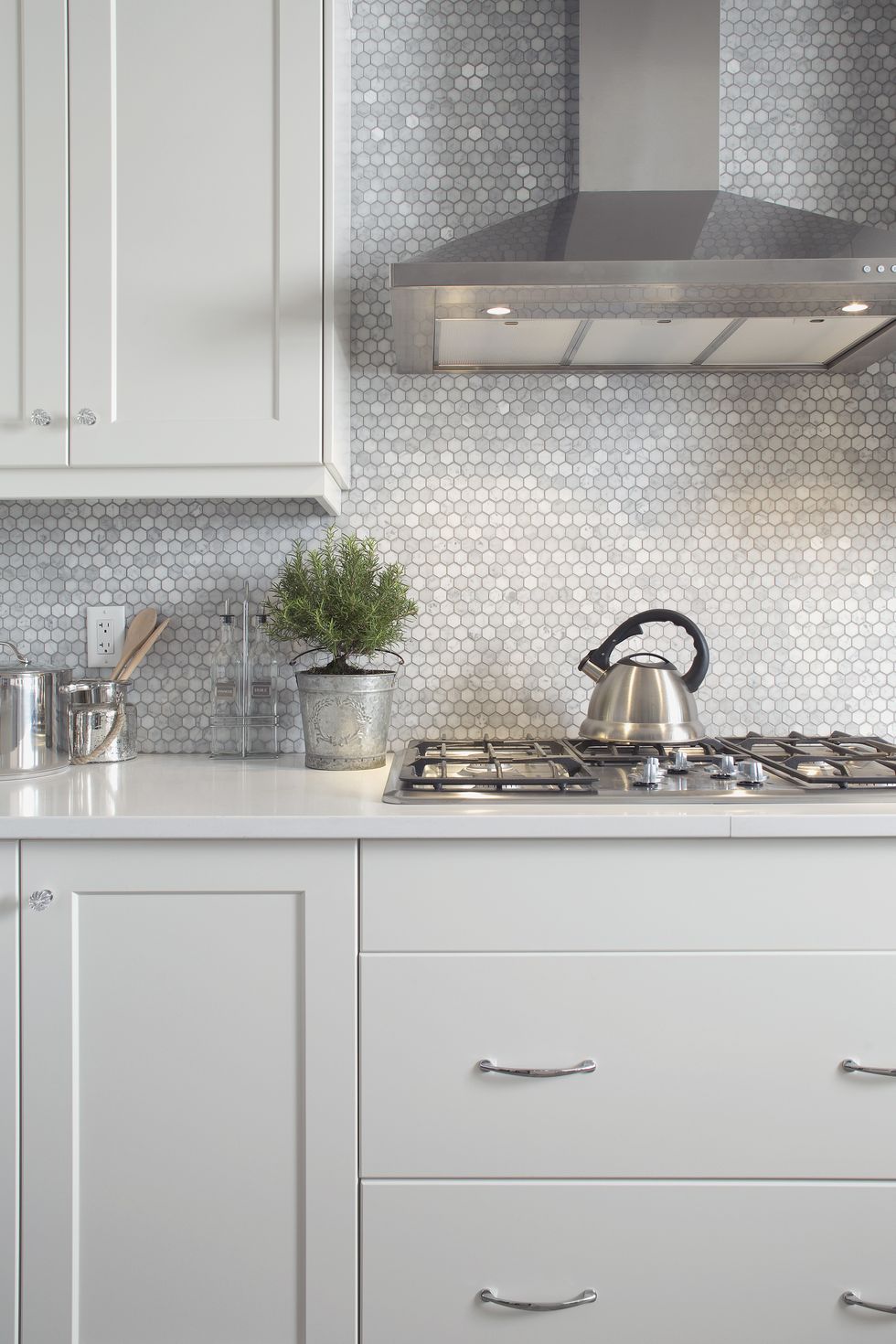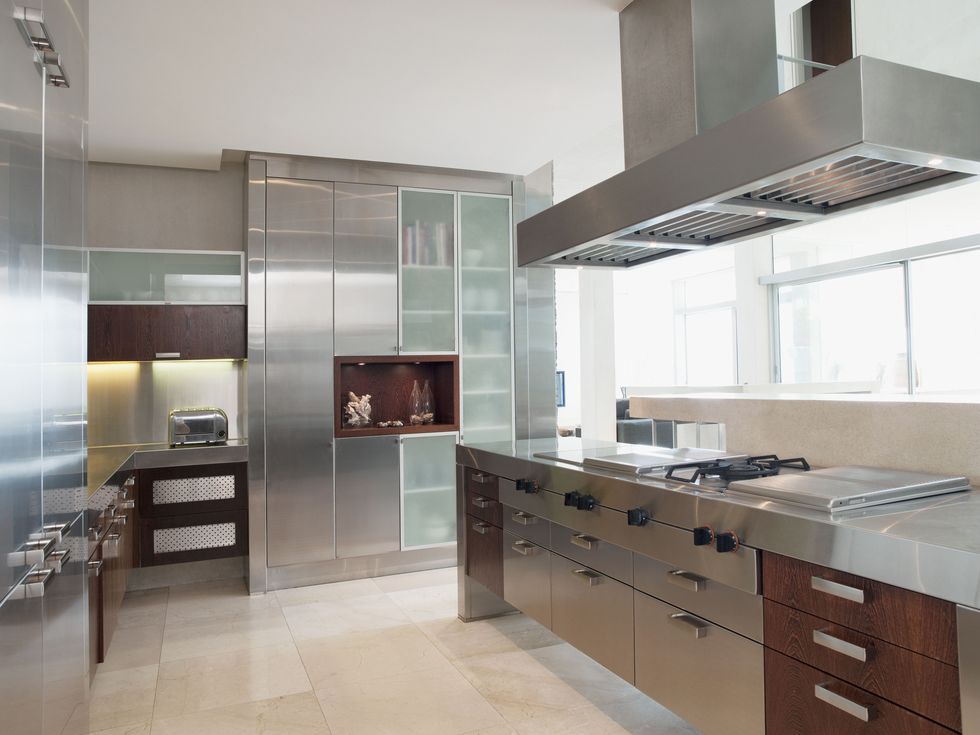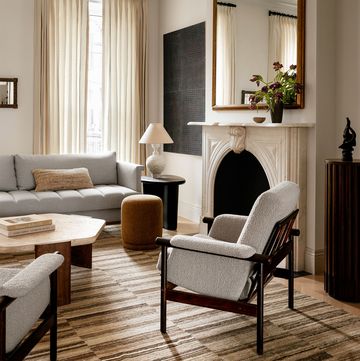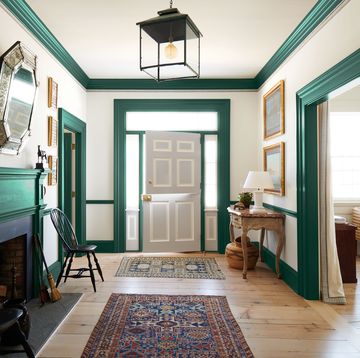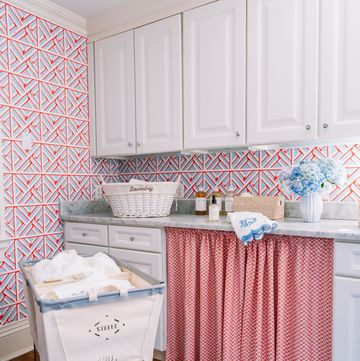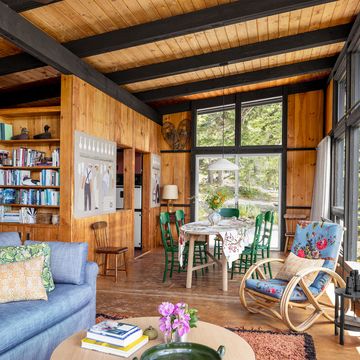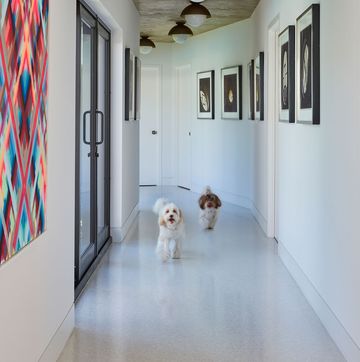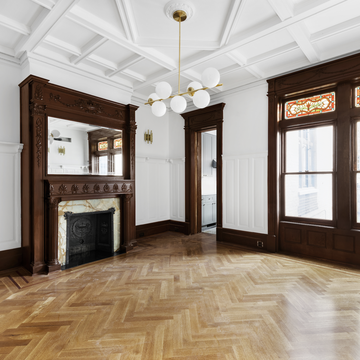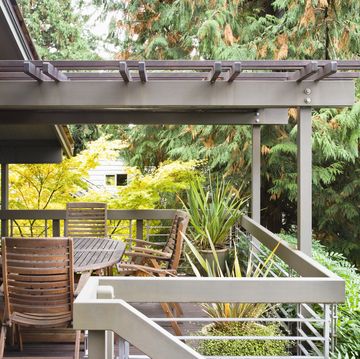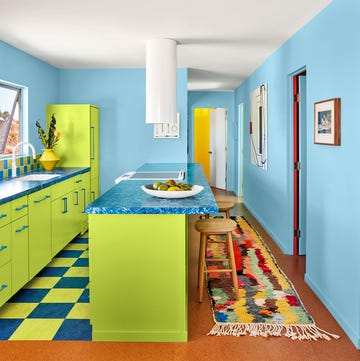Hungry for a kitchen update? Cabinetry can transform the space. And there's a cornucopia of options to meet aesthetic and budgetary needs, says Mark Karas, the president of the National Kitchen & Bath Association and general manager of Adams Kitchens, a remodeling company in Stoneham, Massachusetts. Choose inexpensive, ready-made stock cabinets, built-to-order semi-custom varieties (they cost about 25 percent more but come in a broader range of styles), or pricey custom cabinets that are made to fit your space and design specifications. You'll find variety across the board—including metals, woods, thermofoils, laminates, and cupboards constructed using eco-friendly materials. To figure out what suits your kitchen best, let us offer some food for thought.
Wood Cabinets
Description: Cabinet boxes consist of wood veneers adhered to plywood or furniture-grade particleboard. Doors may be solid wood or veneers.
Options: Semi-custom and custom collections offer an array of styles in natural, stained, or painted finishes. Stock choices are limited to a few woods and stains.
Pros: Scratches are easily repaired, and cabinets can be restained or painted to give a new look down the road.
Cons: Humidity can cause solid-wood slab doors to warp over time.
Care: Clean stains with dishwashing soap and warm water. Hide scratches with a wood filler wax stick. (Try Dap Blend Stick, $3; hardware stores.)
Cost: From $100 for an 18-inch-wide stock cabinet, $250 for semi-custom, and up to $800 for custom.
Eco-Friendly Cabinets
Description: Cabinets made from reclaimed, renewable, or recycled materials.
Options: The greenest styles are found in semi-custom and custom lines. Look for cupboards crafted from bamboo, salvaged wood, wheatboard (constructed using wheat straw), and even from leather scraps discarded by shoe manufacturers.
Pros: Reducing your carbon footprint a few sizes.
Cons: The cost.
Care: For wood and bamboo, clean with a moist cloth. Leather can dry out, so wipe cabinets weekly with a damp cloth and every few months with a leather formula. (Try Meltonian Saddle Soap, $4; shoeshinekit.com).
Cost: From $250 for an 18-inch-wide semi-custom cabinet to more than $1,000 for a custom one made from leather.
Laminate Cabinets
Description: Veneers composed of layers of paper and plastic resins are bonded to plywood or furniture-grade particleboard. Laminate isn't malleable, so most doors have flat or grooved designs.
Options: Most stock laminates are white or ivory. In semi-custom and custom lines, you'll find a range of colors and finishes. Textures may be matte, granular, or glossy.
Pros: Affordable and durable, laminate resists dings, nicks, and stains.
Cons: It's not impenetrable: Deep cuts and cracks are impossible to repair.
Care: Remove stains with a mild all-purpose cleaner. Camouflage scratches with a laminate repair paste. (Try Formfill, $9, cabinetmart.com.)
Cost: From $80 for an 18-inch-wide stock cabinet, $200 for semi-custom, and up to $680 for a custom one.
Thermofoil Cabinets
Description: Created by heating vinyl and molding it over medium-density fiberboard (MDF), these cabinets come in a variety of shapes and patterns.
Options: Matte white and ivory are the norm in stock cabinetry styles. Semi-custom choices include glossy textures and scores of colors.
Pros: Inexpensive and available in lots of flat and embellished designs.
Cons: Puncture the vinyl layer, and the cabinet cannot be repaired. The coating on thermofoils can separate when exposed to heat. Ask the manufacturer to install heat shields in cabinets that will be located next to the oven.
Care: Spray with a mild all-purpose cleaner and wipe with a cloth. (Try Simple Green, $6; hardware stores).
Cost: From $80 for an 18-inch-wide stock cabinet to $345 for semi-custom.
Metal Cabinets
Description: Metal, often stainless steel, veneers affixed to plywood or furniture-grade particleboard. Other styles include glass or acrylic panels set in a stainless steel or aluminum frame.
Options: Shiny and brushed metals available in stock, semi-custom, and custom lines.
Pros: Sturdy, rust- and stain-resistant, metal doors are unaffected by heat and humidity.
Cons: Metal cabinets can scratch and dent, and they show fingerprints.
Care: Use a damp cloth and wipe with the grain. Remove smudges with a specialty metal cleaner. (Try Method Stainless Steel, $5; methodhome.com). Buff surface scratches with a delicate-duty nylon scouring pad.
Cost: From $150 for a stock model to $1,500 for a custom one.
